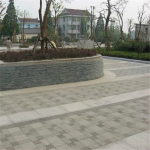Introduction
Mid-century modern design is a style that emerged in the mid-20th century and has since become a timeless classic known for its sleek lines, minimalistic approach, and integration of natural elements. Within this iconic design movement, the use of cultured stone has played a significant role in shaping the aesthetic appeal of architectural and interior spaces. In https://www.fs-slate.com/step-stone/ , we delve into the world of mid-century modern cultured stone, exploring its design characteristics, historical significance, and sustainable features.
Design Characteristics of Mid-Century Modern Cultured Stone
At the heart of mid-century modern design is the emphasis on simplicity, functionality, and the seamless integration of indoor and outdoor spaces. Cultured stone, also known as manufactured stone or faux stone, perfectly embodies these design principles with its ability to mimic the look and feel of natural stone while offering greater versatility and affordability.
One of the key design characteristics of mid-century modern cultured stone is its clean lines and geometric shapes. Whether used in exterior cladding or interior accent walls, cultured stone provides a contemporary yet timeless aesthetic that complements a wide range of architectural styles. The smooth texture and uniformity of cultured stone also contribute to its modern appeal, creating a sense of cohesion and balance in any space.
Another defining feature of mid-century modern cultured stone is its color palette. While natural stone comes in a variety of hues and patterns, cultured stone offers a more consistent and customizable range of colors to suit different design preferences. From earthy tones like sandstone and limestone to bold shades like charcoal and slate, cultured stone allows designers and homeowners to create a cohesive look that enhances the overall design aesthetic.
In terms of form and function, mid-century modern cultured stone is often used to create focal points within a space, such as fireplace surrounds, accent walls, or exterior facades. Its versatility and ease of installation make it a popular choice for both commercial and residential projects, adding a touch of elegance and sophistication to any environment.
Historical Significance of Mid-Century Modern Cultured Stone
The use of cultured stone in mid-century modern design can be traced back to the post-World War II era when there was a growing demand for affordable and durable building materials. As architects and designers sought to create modern, functional spaces that reflected the optimism of the time, cultured stone emerged as a practical alternative to natural stone.
During the mid-20th century, the development of new manufacturing techniques allowed for the creation of lightweight, cost-effective cultured stone products that closely resembled the texture and appearance of natural stone. This innovation revolutionized the construction industry and paved the way for the widespread adoption of cultured stone in architectural and interior design.
One of the most iconic examples of mid-century modern cultured stone can be found in the work of renowned architect Frank Lloyd Wright. Known for his organic architecture and integration of natural materials, Wright often used cultured stone to create visually striking elements in his residential and commercial projects. From the iconic Fallingwater house to the Guggenheim Museum in New York City, Wright's use of cultured stone helped define the mid-century modern aesthetic and continues to inspire designers to this day.
In addition to Wright, other influential architects and designers of the mid-century modern era also embraced cultured stone as a versatile and sustainable building material. The clean lines and minimalist aesthetic of mid-century modern design were perfectly complemented by the texture and warmth of cultured stone, creating a harmonious balance between natural and man-made elements.
Sustainable Features of Mid-Century Modern Cultured Stone
In recent years, sustainability has become a key consideration in architectural and interior design, with a growing emphasis on eco-friendly materials and practices. Mid-century modern cultured stone offers several sustainable features that make it an attractive choice for environmentally conscious projects.
One of the primary sustainable features of cultured stone is its manufacturing process. Unlike natural stone, which requires extensive quarrying and transportation, cultured stone is produced using molds and lightweight aggregates that reduce energy consumption and carbon emissions. This process also allows for the efficient use of raw materials, making cultured stone a more eco-friendly alternative to traditional stone products.
Additionally, the durability and longevity of mid-century modern cultured stone contribute to its sustainability credentials. Cultured stone is resistant to weathering, fading, and cracking, making it a low-maintenance option for both indoor and outdoor applications. By choosing cultured stone over natural stone, designers and homeowners can reduce the need for frequent repairs and replacements, thereby minimizing waste and conserving resources.

Furthermore, the versatility of cultured stone allows for creative reuse and repurposing in design projects. Whether used as a primary building material or as an accent feature, cultured stone can be easily removed and recycled at the end of its lifecycle, reducing the environmental impact of construction and renovation projects.
Conclusion
Mid-century modern cultured stone represents a harmonious blend of design, history, and sustainability, embodying the timeless elegance of the mid-20th century design movement. With its clean lines, versatile color palette, and eco-friendly features, cultured stone continues to be a popular choice for architects, designers, and homeowners seeking to create modern, functional spaces that stand the test of time.
As we look to the future of architectural and interior design, mid-century modern cultured stone serves as a reminder of the enduring appeal of classic design principles and the importance of sustainable practices in shaping the built environment. Whether used to create a striking focal point or to add texture and warmth to a space, cultured stone remains a versatile and timeless choice that reflects the essence of mid-century modern design.
